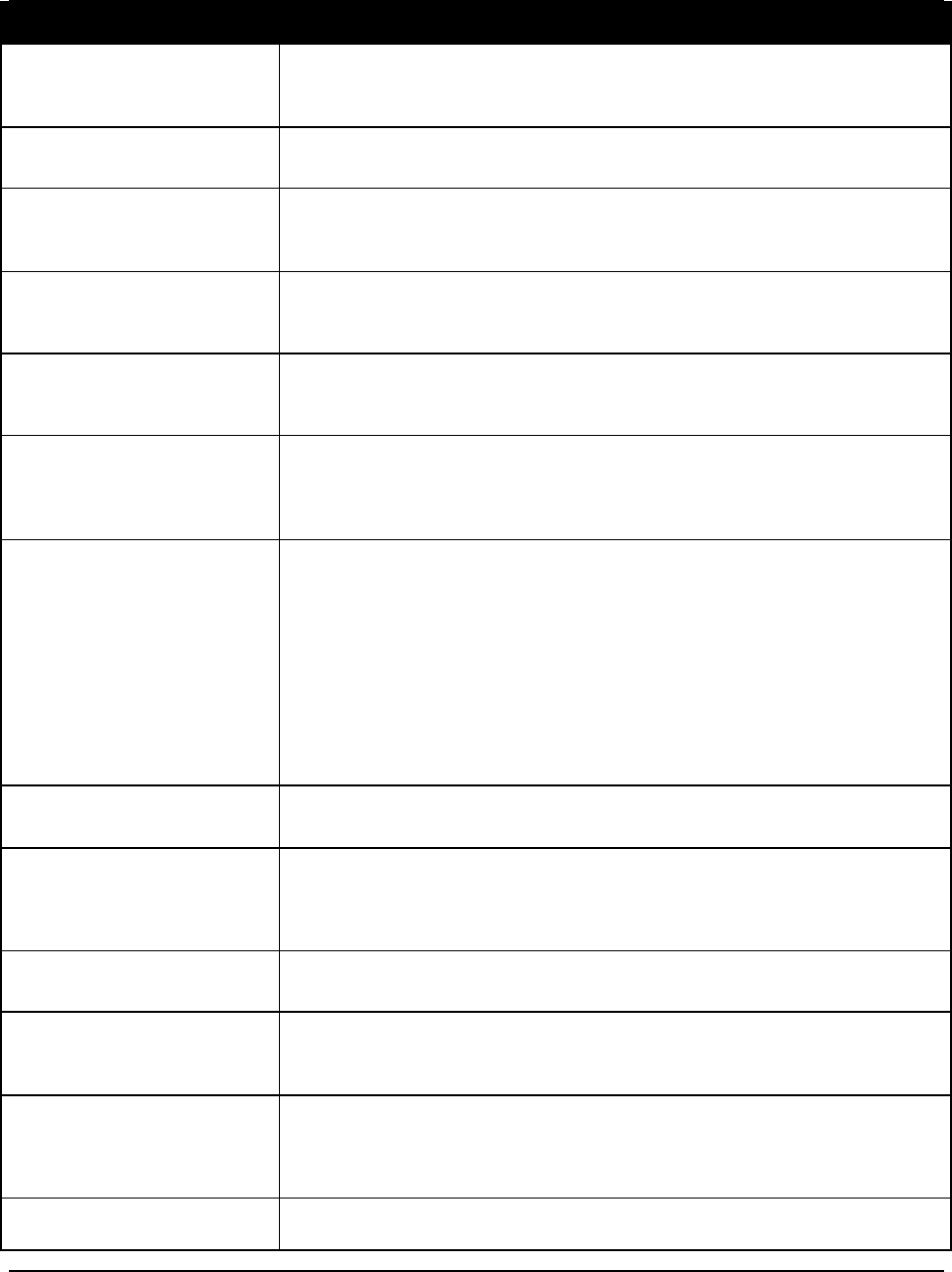User`s guide

Virtual Weather Station User's Guide
-99- 03/07/06
Term Definition
GUST A sudden significant increase in or rapid fluctuations of wind speed. Peak wind must reach
at least 16 knots (18 miles per hour) and the variation between peaks and lulls is at least 10
knots (11.5 miles per hour). The duration is usually less twenty seconds.
HEAT INDEX The combination of air temperature and humidity that gives a description of how the
temperature feels. This is not the actual air temperature.
HEATING DEGREE DAY
One heating degree day is given for each degree that the daily mean temperature is below
65 degrees a given temperature. It is used as an indication of fuel consumption. Refer to
degree day or cooling degree day.
HUMIDITY
The amount of water vapor in the air. It is often confused with relative humidity or dew
point. Types of humidity include absolute humidity, relative humidity, and specific
humidity.
LATITUDE The location north or south in reference to the equator, which is designated at zero (0)
degrees. Parallel lines that circle the globe both north and south of the equator. The poles
are at 90 degrees North and South latitude.
LONGITUDE The location east or west in reference to the Prime Meridian, which is designated as zero
(0) degrees longitude. The distance between lines of longitude are greater at the equator
and smaller at the higher latitudes, intersecting at the earth's North and South Poles. Time
zones are correlated to longitude. See Greenwich Mean Time.
MOON PHASE The moon phase is caused by sun rays reflecting off the moon's surface while it moves
around the earth. The sun illuminates half of the moon at any time while the moon orbits
around the earth. The variation in the angle made by the earth-moon line with respect to
the earth-sun line causes changing phase of the moon.
The moon completes one revolution around the earth in 27.322 days with respect to the
background stars. This is called the SIDERIAL period of the moon. During this same time
the earth moves about 27 degrees along its orbit around the sun. As a result, the moon
takes about two extra days to complete the cycle with respect to the sun-earth line. This
longer cycle of the moon that takes about 29.57 days is called SYNDONIC period of the
moon. The longer cycle is considered as Lunar month.
PRESSURE ALTITUDE Atmospheric or barometric pressure expressed in terms of altitude which corresponds to
that pressure in the standard atmosphere.
RATE OF CHANGE The derivative or change in a parameters value with respect to time. Virtual Weather
Station calculates the rate of change by calculating the derivative of a parameter, and then
filtering it over one hour. Thus, the rate of change equation factors all of the
measurements taken in the last hour, and may not exactly match the change in one hour.
RELATIVE HUMIDITY A type of humidity that considers the ratio of the actual vapor pressure of the air to the
saturation vapor pressure. It is usually expressed in percentage.
SEA LEVEL PRESSURE The atmospheric pressure at mean sea level either directly measured by stations at sea
level or empirically determined from the station pressure and temperature by stations not
at sea level. Used as a common reference for analyses of surface pressure patterns.
SUNRISE The daily appearance of the sun on the eastern horizon as a result of the earth's rotation. In
the United States, it is considered as that instant when the upper edge of the sun appears
on the sea level horizon. In Great Britain, the center of the sun's disk is used instead. Time
of sunrise is calculated for mean sea level. See sunset for comparison.
SUNSET The daily disappearance of the sun below the western horizon as a result of the earth's
rotation. In the United States, it is considered as that instant when the upper edge of the
sun just disappears below the sea level horizon. In Great Britain, the center of the sun's










